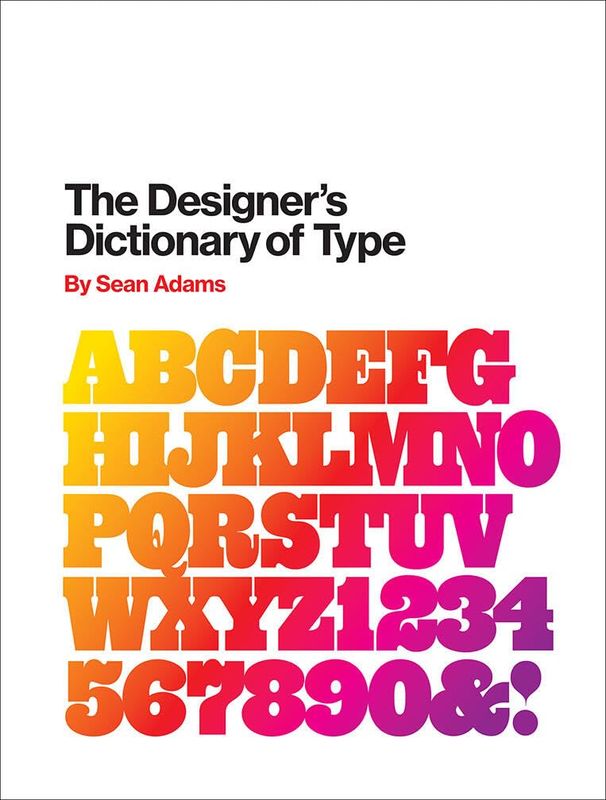Milton Glaser Book Summary
In 'Milton Glaser: Graphic Design,' the legendary designer and co-founder of New York Magazine invites readers into his creative universe, showcasing a career that redefined visual communication. With personal anecdotes and a treasure trove of iconic work, Glaser explores the powerful relationship between art and society. His reflections reveal the philosophies that guided his groundbreaking designs, from the 'I ♥ NY' logo to his compelling posters. This book is not just a portfolio; it's a compelling narrative of inspiration, passion, and the pursuit of beauty. Dive into Glaser's world and discover how graphic design can change the way we see the world.
By Milton Glaser
Published: 1983
"Art is the most beautiful of all lies; it allows us to find the truth in our imagination."
Book Overview of Milton Glaser: Graphic Design
About the Book Author
Milton Glaser
Milton Glaser (1929-2020) was a renowned graphic designer and illustrator, best known for his iconic works that have had a profound impact on American visual culture. Born in the Bronx, New York, Glaser co-founded the groundbreaking design firm Push Pin Studios and is widely celebrated for his artistic contributions, including the famous 'I ♥ NY' logo and the Bob Dylan poster featuring vibrant colors and psychedelic elements. His writing style is characterized by a blend of keen social commentary and personal reflection, often encapsulating complex ideas in a visually striking manner. Throughout his career, Glaser championed the power of design and its ability to communicate ideas effectively, leaving a lasting legacy in the fields of design and visual arts.
Book Details
Key information about the book.
- Authors
- Milton Glaser
- Published
- November 1983
- Publisher
- Harry N. Abrams
- ISBN
- 0879511885
- Language
- English
- Pages
- 240
- Genres
- Graphic DesignDesign
Purchase Options
Support local bookstores: BookShop gives a portion of each sale to independent bookshops!
Similar books you might like →
Identity Designed Book Summary
In 'Identity Designed,' David Airey takes readers on a captivating journey through the art and science of branding. This visually stunning book showcases a rich collection of global identities, revealing the strategies behind their creation. Airey delves into the psychological impact of design, urging readers to think deeply about how branding shapes perceptions. With insightful case studies and expert commentary, it sparks curiosity about the essence of identity in modern culture. Perfect for designers and entrepreneurs alike, this book invites you to explore the power of visual storytelling in building a brand.
A Book Apart: On web typography - Jason Santa Maria Book Summary
In 'A Book Apart: On Web Typography,' Jason Santa Maria unveils the critical art of type on the web, exploring how typefaces can shape user experience. Delve into the interplay between design and readability, and discover how thoughtful typography can enhance digital communication. With practical insights and inspiring examples, Santa Maria challenges conventional wisdom and encourages designers to push the boundaries of creativity. This book is not just a manual; it's an invitation to rethink how we present words online. Whether you're a seasoned designer or a curious newcomer, this exploration of typography will transform your understanding of web aesthetics.
The Designer's Dictionary of Type Book Summary
Delve into the fascinating world of typography with 'The Designer's Dictionary of Type' by Sean Adams. This comprehensive guide unravels the intricacies of typefaces, revealing their unique personalities and historical contexts. Each entry offers insights that inspire creativity and enhance design skills, making it an essential reference for both novice and seasoned designers. With stunning visual examples, the book encourages a deeper appreciation for the art and science of type. Discover how the right type can transform your work and captivate your audience!
Designing with Type, 5th Edition Book Summary
Dive into the art and science of typography with 'Designing with Type, 5th Edition'. This essential guide unravels the intricacies of typefaces, spacing, and layout, empowering designers to elevate their work. Through a rich blend of practical insights and illustrative examples, Craig and Scala reveal how type influences design perception. Whether you’re a novice or a seasoned professional, this book opens your eyes to the transformative power of typography. Discover how to shape your visual communication and captivate your audience with every word.
The Design of Everyday Things Book Summary
In 'The Design of Everyday Things', Don Norman reveals the hidden principles behind effective design that shapes our everyday interactions. He explores the psychological underpinnings of how we perceive and interact with objects, highlighting the importance of usability and user-centered design. Through captivating examples, Norman illustrates how poor design can lead to frustration, while thoughtful design enhances our experience. This book challenges readers to rethink the functionality of everyday items, making them consider the design choices behind the objects they encounter. Ultimately, it invites us to demand better designs that cater to our needs, making the mundane extraordinary.
100 Things Every Designer Needs to Know about People Book Summary
In '100 Things Every Designer Needs to Know about People,' Susan Weinschenk unveils essential psychological principles that can enhance design effectiveness. With insights drawn from cognitive science, the book explores how people perceive, interact with, and make decisions about design. From the nuances of color perception to the importance of empathy in user experience, Weinschenk offers practical strategies for designers. Each principle is supported by fascinating research, making the content both informative and engaging. This enlightening guide equips designers to create more intuitive and user-friendly experiences, sparking curiosity about the intersection of psychology and design.
Gamification by Design Book Summary
In 'Gamification by Design', the authors explore the art and science of integrating game mechanics into non-game contexts to enhance user engagement and motivation. They uncover the psychology behind what makes games addictive and how these principles can be applied to real-world scenarios. Through practical case studies and actionable frameworks, the book reveals how gamification can be a catalyst for innovation and user loyalty. Are you ready to unlock the secrets of game mechanics and transform your projects? Dive into this insightful read to discover how to design experiences that captivate and retain users!
Design for Real Life Book Summary
In 'Design for Real Life', Eric A. Meyer and Sara Wachter-Boettcher challenge the traditional notions of design by highlighting how digital products impact users' lives beyond the screen. They delve into the complexities of real-world scenarios, emphasizing the importance of empathy and inclusivity in design processes. Through compelling case studies and practical advice, the authors reveal a transformative approach that prioritizes human experiences. This book invites designers to anticipate the unexpected challenges that users might face. Can design truly support and uplift those navigating tough situations in life?
Showing 8 of 30 similar books
Similar Book Recommendations →

Jordan Hughes's Book Recommendations
Jordan Hughes is a celebrated author known for their compelling narratives and richly developed characters. Their debut novel, "Echoes of Tomorrow," won the prestigious Man Booker Prize, marking a significant milestone in contemporary fiction. Hughes's work often explores themes of identity, resilience, and the human condition, earning them critical acclaim and a dedicated readership. In addition to their novels, Hughes has contributed thought-provoking essays to major literary journals, further solidifying their influence in the literary world. Their innovative storytelling continues to inspire and captivate audiences worldwide.

Jan Losert's Book Recommendations
Jan Losert is a visionary author and digital design expert, renowned for his contributions to the intersection of technology and creativity. His most significant work includes co-authoring "Design Systems Handbook," which has become a seminal guide for creating cohesive and efficient design frameworks. Losert's expertise extends to his role as a speaker and educator, where he passionately shares his insights on user experience and interface design. In addition to his literary achievements, he co-founded several successful startups, leveraging his deep understanding of design to drive innovation. His work continues to influence and inspire both emerging and established designers worldwide.

Bret Victor's Book Recommendations
Bret Victor is a renowned American interface designer and computer scientist celebrated for his innovative contributions to interactive design and human-computer interaction. He is best known for creating dynamic, explorable explanations, which have significantly influenced the way educational content is presented and understood. Victor's seminal work, "Inventing on Principle," advocates for the integration of immediate feedback in creative processes, inspiring a new wave of interactive programming environments. As a former member of the Apple Human Interface team, he played a pivotal role in shaping modern user interfaces. Through his organization, Dynamicland, Victor continues to explore and expand the boundaries of immersive, collaborative computing environments.

Coleen Baik's Book Recommendations
Coleen Baik is an American designer, artist, and entrepreneur, known for her work in the tech industry, including as a founding team member of Twitter. Baik played a key role in shaping the user experience and design of Twitter in its early days, contributing to its iconic interface. She is also the founder of Baik Art, a multidisciplinary art studio that blends technology and visual art. Baik is passionate about using design to create meaningful and user-centered digital experiences, and she frequently speaks on topics related to innovation, design, and creativity. Her work has made her a prominent figure in the intersection of tech and design.

Kevin Rose's Book Recommendations
Kevin Rose is a notable entrepreneur and technology investor, best known for founding Digg, a pioneering social news website that significantly influenced online content sharing. Although not primarily recognized for literary contributions, Rose has impacted digital media and online culture, which are recurring themes in contemporary literature on technology. His insights and experiences have been featured in various tech journals and books, enriching discussions on innovation and digital entrepreneurship. Rose also co-hosted the popular podcast "The Random Show" with Tim Ferriss, where he shares his thoughts on technology, health, and productivity. Through his ventures and public speaking, Rose continues to inspire narratives around the digital revolution and startup culture.

Bill Gates's Book Recommendations
Bill Gates, co-founder of Microsoft Corporation, is a pioneering figure in the tech industry, having played a key role in the personal computer revolution. His work at Microsoft, particularly the development of Windows, transformed software and computing globally. Beyond his technology contributions, Gates is also a prolific author, with notable works such as "The Road Ahead" and "Business @ the Speed of Thought," which offer insights into the future of technology and business. Additionally, his philanthropic efforts through the Bill & Melinda Gates Foundation have had a profound impact on global health, education, and poverty. Gates continues to influence both technology and literature with his forward-thinking perspectives and innovative ideas.

Debbie Millman's Book Recommendations
Debbie Millman is a renowned designer, author, educator, and brand consultant, celebrated for her influential work in the field of design and branding. She is the host of the award-winning podcast "Design Matters," which is one of the world's first and longest-running podcasts about design and creative culture. Millman has authored several critically acclaimed books, including "Brand Thinking and Other Noble Pursuits" and "Why Design Matters: Conversations with the World's Most Creative People." As the Chair of the Masters in Branding Program at the School of Visual Arts in New York City, she has shaped the minds of future design leaders. Her contributions to literature and education have earned her a place among the most respected voices in contemporary design and branding.

Jeremiah Shoaf's Book Recommendations
Jeremiah Shoaf is a distinguished designer and writer, best known for his influential contributions to typography and design literature. As the founder of Typewolf, a renowned website that guides designers in selecting the perfect fonts, Shoaf has become a vital resource in the design community. His insightful articles and reviews on typography have earned him a significant following and respect among design professionals. Shoaf's work has been featured in numerous design publications, solidifying his status as an authority in the field. Beyond Typewolf, his broader contributions to design education have inspired and informed both aspiring and established designers worldwide.
Showing 8 of 13 related collections
“Art is the most beautiful of all lies; it allows us to find the truth in our imagination.”
Milton Glaser
By Milton Glaser
Frequently Asked Questions
Explore Our Catalogue
Discover a world of knowledge through our extensive collection of book summaries.
Genres
Genres
Genres
Featured Collections
- Top Book Club Picks
- One-Stop Nutrition
- Summer Reads 2024
- Best Beach Reads 2024
- Work-Life Balance Guide
- Time Management
- Healthy Foods
- Entrepreneur Toolkit
- Mind & Body Wellness
- Future Tech Insights
- Leadership Essentials
- Financial Freedom
- Sci-Fi Masterpieces
- Parenting 101
- Books That Became Blockbusters
- Guide to a Healthy Pregnancy










